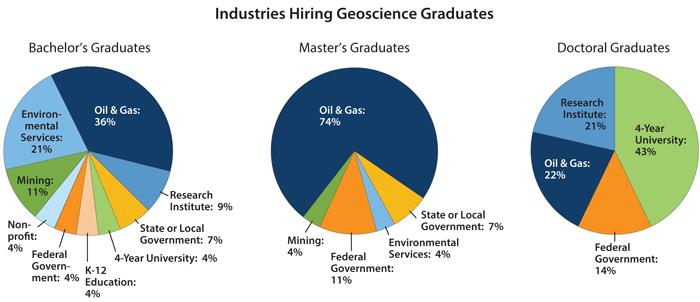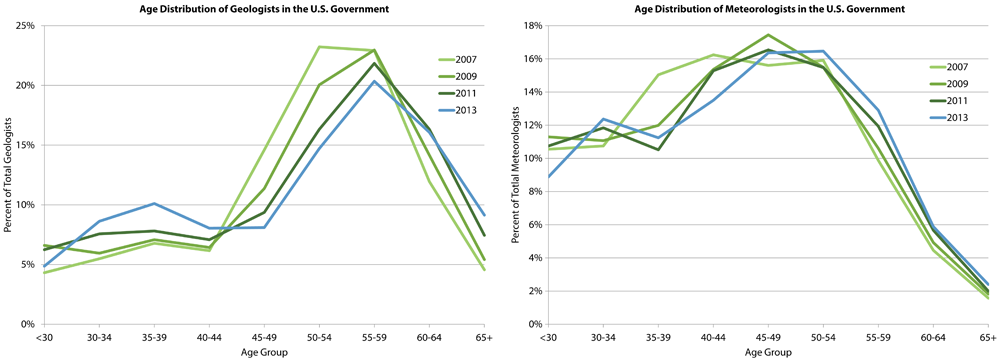I sat down with AGI Workforce Department analyst Carolyn Wilson. She is one of the key players in publishing products from AGI's workforce program including the Directory of Geoscience Departments and the Geoscience Student Exit Survey. She recently completed the newest Status of the Geoscience Workforce Report. It demonstrates that jobs requiring training in the geosciences continue to be lucrative and in-demand but even with increased enrollment and graduation rates from geoscience programs, the data still project a shortage of around 135,000 geoscientists needed in the workforce by the end of the decade.

“Industry has recognized, and is mitigating the upcoming shortage of skilled geoscientists in their employ, but the federal geoscience workforce is still shrinking” Wilson said, noting that the federal geoscience workforce decreased in all sectors except meteorology; this includes geoscientists skilled in the energy, mining/minerals and hydrology fields. But there are challenges that come with assembling a report that requires data from so many sectors, including acquiring the data from major players in industry - industries that may not even collect relevant data on their workforce. Also challenging is identifying the nuanced metrics that demonstrate a student graduating with one of the many geoscience degrees available (geology, geophysics, geography, paleontology, mining geology and meteorology to name a few) is competent and skilled for the U.S. workforce. The greatest challenge, Wilson noted, is trying to interpret the many different definitions placed on different federal data sources. Combined with continued unevenness is the workforce readiness of many geoscience graduates and a regionally hot job markets, the geosciences are a dynamic component of the U.S. economy.

Two graphs from the latest Status of the Geoscience Workforce Report showing federal geologists have a higher median age versus federal meteorologists.
Employers do have appreciably skilled geoscientists to choose from too. The numbers of graduating geoscience majors who started their degrees at a two-year colleges have increased. I have met many fine scientists who found that enrolling at a two-year college was an economic way to get a degree. Also exciting, is that numbers of students participating in a field camp experiences have increased. In geology, field camp is one of the most important aspects of a student's learning experience. Field camp is where students can test their ability to interpret the landforms; these critical skills are used to determine where energy or water resources exist, as well as interpreting locations susceptible to hazards like flooding or landslides. Time spent in the field can also create life-long friendships with colleagues, and it nurtures a sense of "place in the universe" that most geoscientists treasure.
While these experiences are life-changing the report again focuses on the growing concern from employers over whether these students are graduating with enough quantitative experience to be completely apt for a career in the geosciences. The report identified that most students graduating from a geoscience degree program have taken math courses up to a calculus-II level. Discussions have been ongoing about how to ensure that students are leaving their degree programs adequately prepared. Employers underscore the necessity of having enough skilled grads to meet vacancies that will exist in the geoscience sector in the upcoming decades.
“There is incredible potential for institutions to recruit from the diverse talent pools arising at two year institutions, and many career opportunities available to students enrolled in geoscience programs, and early-career geoscientists entering the workforce,” Wilson said. “Plus, this is the first time we have seen a major shift in employment patterns in over a generation, with increasing number of bachelor recipients securing geoscience positions, and newly minted Master’s finding themselves in high demand.”
Read the report yourself, and let us know what you think. It is available for download from the following link: http://bit.ly/GeoWorkforce

